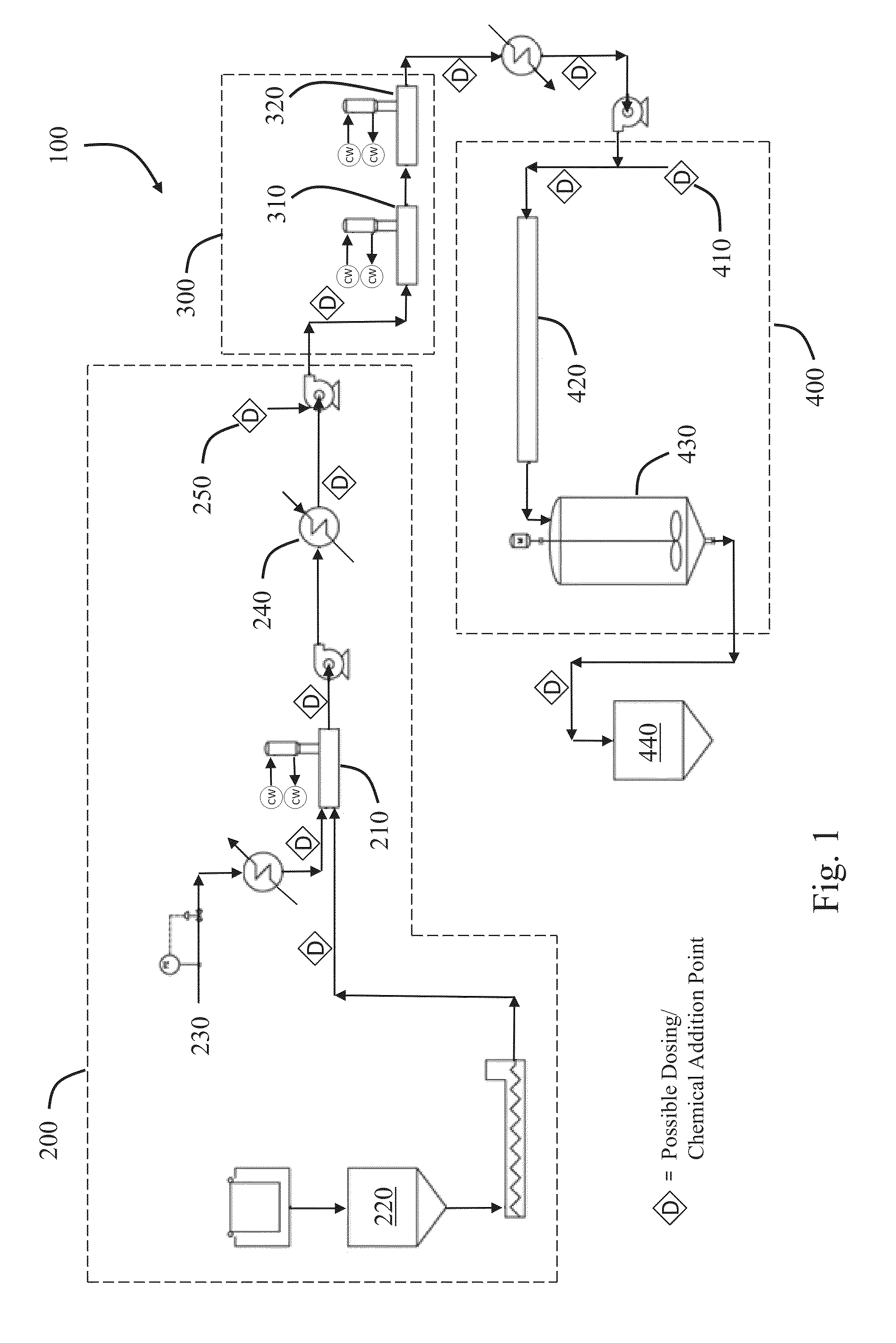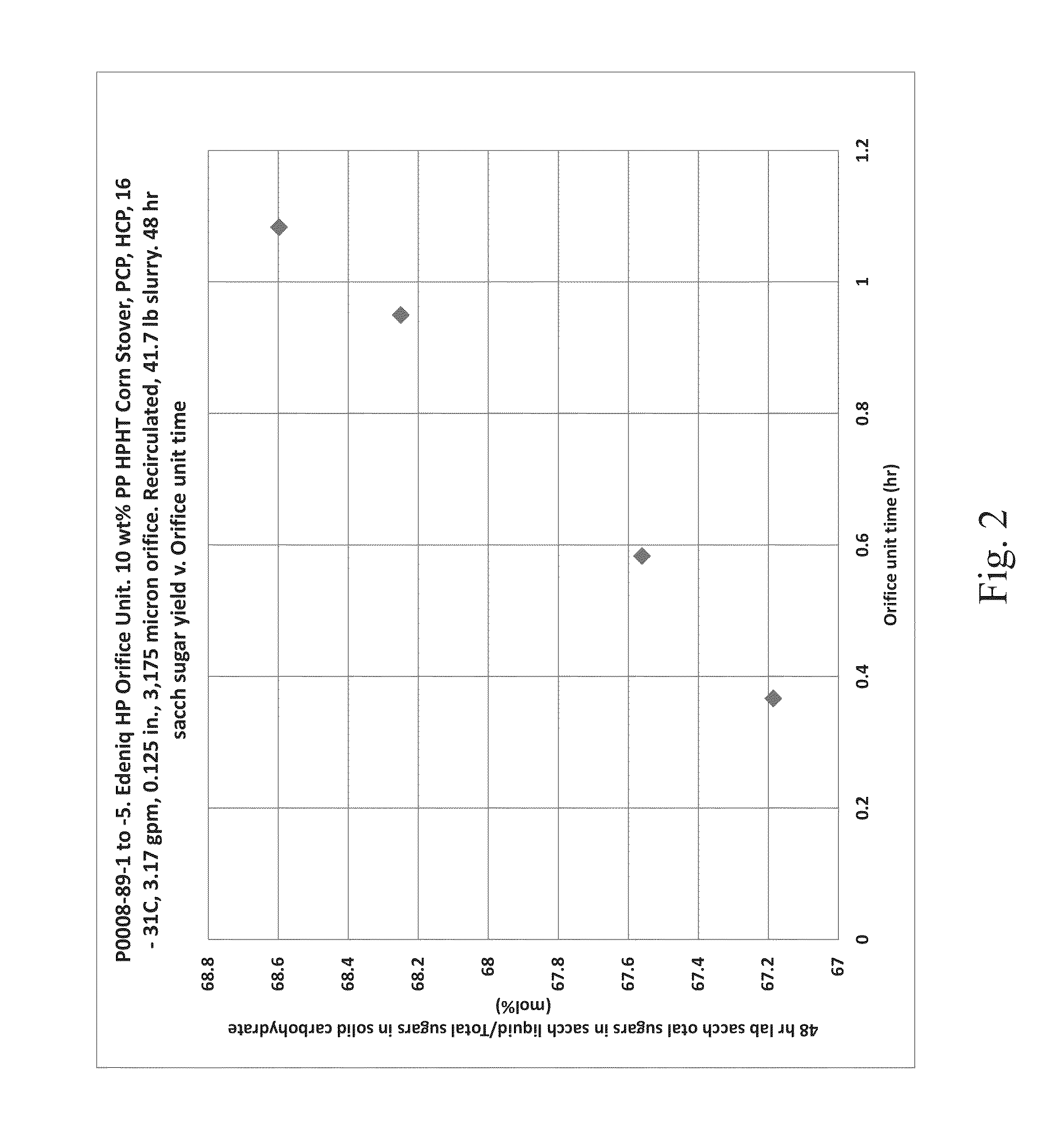Methods and Systems for Pretreatment of Biomass Solids
a biomass solids and pretreatment technology, applied in the field of biofuel production, can solve the problems of exacerbate sugar shortages, inflame the food vs. fuel debate, achieve compelling production economics, and low throughput capacity, so as to facilitate the conversion of biomass solids, reduce the particle size of biomass solids, and facilitate the effect of biomass solid conversion
- Summary
- Abstract
- Description
- Claims
- Application Information
AI Technical Summary
Benefits of technology
Problems solved by technology
Method used
Image
Examples
examples
[0060]Description of Experimental Unit:
[0061]The purpose of the experimental equipment was to determine the effect of orifi of different internal diameters on the particle size distribution of pumped biocellulosic slurry and to measure the sugars which are released from the solid matrix in consequence of this pretreatment. The equipment was operated by charging wet particulate biocellulosic material and deionized water into an agitated conically-based feed tank, from whence it was transferred by gravity to a Moyno progressive cavity pump (PCP) and thence to a Hydra Cell slurry diaphragm pump (HCP). The latter was rated for 3 gpm at 3,000 psig discharge pressure. The slurry was heated to the required process temperature in a Tube Heat Exchanger, which was heated by regulated low pressure steam. Process temperatures were measured after the HCP and after the Heat Exchanger. Pressures were similarly measured.
[0062]The slurry flowed through a Orifice Canister, which holds zero to four or...
PUM
| Property | Measurement | Unit |
|---|---|---|
| temperature | aaaaa | aaaaa |
| pressure | aaaaa | aaaaa |
| temperature | aaaaa | aaaaa |
Abstract
Description
Claims
Application Information
 Login to View More
Login to View More - Generate Ideas
- Intellectual Property
- Life Sciences
- Materials
- Tech Scout
- Unparalleled Data Quality
- Higher Quality Content
- 60% Fewer Hallucinations
Browse by: Latest US Patents, China's latest patents, Technical Efficacy Thesaurus, Application Domain, Technology Topic, Popular Technical Reports.
© 2025 PatSnap. All rights reserved.Legal|Privacy policy|Modern Slavery Act Transparency Statement|Sitemap|About US| Contact US: help@patsnap.com



